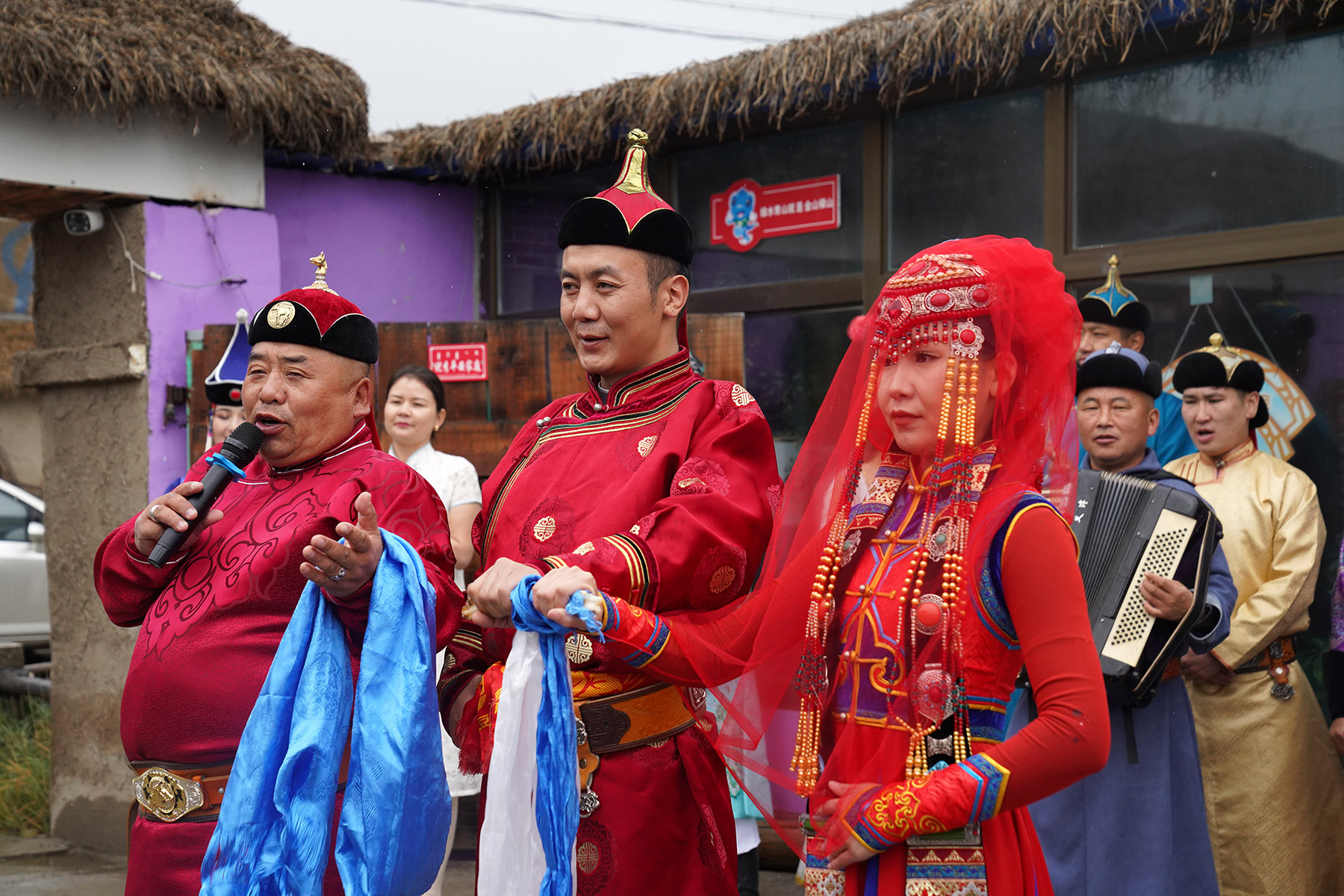Ethnic culture, frontier spirit and natural bounty all part of remote village's growing touristic appeal, Xu Lin and Mao Weihua report in Bortala, Xinjiang.

Two and a half centuries ago, their ancestors held fort at the border, ordered by their emperor to do so. Now, the residents of Bogdal, in traditional costumes, welcome visitors to their village for a glimpse of their remarkable history.
To solemn background music, a group of soldiers in historical costumes slowly approach on horseback, evoking the village's heritage.
During the reign of Emperor Qianlong of the Qing Dynasty (1644-1911), several thousand Mongolian soldiers and their families were ordered to migrate westward to Xinjiang to garrison the border.
They endured hardships and only reached their destination after a long and arduous journey. Nowadays, their descendants form the majority of Bogdal's population.
READ MORE: Xinjiang's appeal reaches wider audience
Located in the Bortala Mongolian autonomous prefecture in the Xinjiang Uygur autonomous region, Bogdal village is inhabited by the Mongolian, Kazak, Uygur and Han ethnic groups.
Originally a pastoral community, it has become an emerging tourist destination in recent years.

In summer, visitors enjoy the massive fields of fragrant clary; in winter, they soak in nearby hot springs and go skiing.
The major draws include experiencing ethnic culture and sampling delicious food in Mongolian or Kazak-style yurts.
They can practice archery and watch a village gate-opening ceremony in the daytime, enjoy a bonfire party and delight in cultural performances at night.
Bogdal is about 60 kilometers from Sayram Lake, the largest alpine lake in Xinjiang, which is known for its stunning views and rich biodiversity. The village also attracts tourists who opt for short trips to both destinations due to their proximity.
The village's face-lift is all due to a rural vitalization project that started in 2021.
Infrastructure has been fully developed, including sewage systems, roads and walls, all renovated with government funding. The village committee encourages residents to convert idle houses into homestays, and organizes activities to attract tourists.
"In the past, we used to wait for visitors; now they actively seek us out," says 50-year-old homestay owner Zhu Shengjuan.
She previously ran a beauty parlor in Wenquan county but in 2021, she decided to return and turned a backyard warehouse into three guesthouses. Confident in the village's tourism potential, Zhu invested over 1 million yuan ($140,311) last year to expand her homestay.

The county is known for its produce, including beef, mutton, cold-water fish and wild mushrooms. In the 38 homestays run by villagers, visitors can enjoy healthy and affordable food, including vegetables freshly picked from the garden.
Zhu says that the rural vitalization project includes professionals who design the interiors of homestays free of charge, with owners covering only the renovation.
"The biggest change is that our homestay has upgraded in scale, with chefs serving food, while in the past, we cooked for the tourists ourselves."
In peak summer season, the village welcomes about 2,500 to 3,000 tourists per day on average. Visitors have to book restaurants and lodgings in advance, and Zhu employs several local residents to help out.
The village's homestay and restaurant owners are working with travel agencies to attract more tourists during autumn and winter as well, in the hopes that their reputation will bring in more visitors.

"The happiness index of villagers is increasing. Also, more talented people are returning to start businesses in their hometowns," says Aygul Jumata, Party secretary of the village.
"Through the development of tourism, people of all ethnic groups have been able to enjoy the dividends of rural vitalization," she adds.
According to Wu Liyun, a professor at the Beijing International Studies University's China Academy of Culture and Tourism, developing culture and tourism is an effective way of boosting rural vitalization and it is crucial to integrate multiple industries based on local cultural resources to create competitive tourism offerings.
ALSO READ: Sound of the steppes
She attributes Bogdal village's success to the combination of its historical frontier legacy with rural tourism.
She believes that the key to rural tourism development is a variety of offerings based on the thorough research of local culture and history, which makes a destination stand out. Infrastructure, public services and accessibility are also important, including accommodation and catering.
"Promotion through new media also counts, and has become a norm for the tourism industry, even for destinations with high-quality offerings. Over the past year, destinations that gained sudden popularity online have largely been propelled by new media," she says.
Contact the writers at xulin@chinadaily.com.cn


